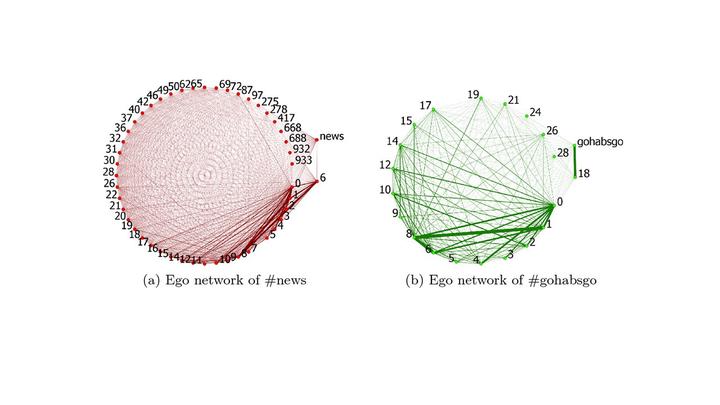Canadian Federal Election and Hashtags that Do Not Belong
 Connections from two hashtags to topics. Left is an uninformative hashtag, #news, poorly connected to its topic 6. Right is an informative hashtag, #gohabsgo, well connected to its topic 18.
Connections from two hashtags to topics. Left is an uninformative hashtag, #news, poorly connected to its topic 6. Right is an informative hashtag, #gohabsgo, well connected to its topic 18.
Abstract
Topic modeling plays a central roll for understanding discussion on social media platforms such as Twitter. One simple, yet powerful, method of topic analysis on Twitter is performing community detection on the network of hashtags. While this approach is simple and scalable, its interpretability has room for improvement. From a community-detection perspective, some hashtags obscure topics more than they help define them. In this work, we introduce a method of filtering hashtags from topic groups to create more interpretable topics. This modularity-based approach is highly scalable, which we demonstrate through analysis of three networks with approximately one million nodes. These networks were collected the week before, during, and after the Canadian federal election of 2019. Our hashtag filtering method is demonstrated to improve the resulting topics, allowing for easier interpretation. From the resulting topics, it is shown that both liberals and conservatives led effective hashtag campaigns, and that discussion quickly moved away from specific parties and toward issues like climate change in the week following the election.